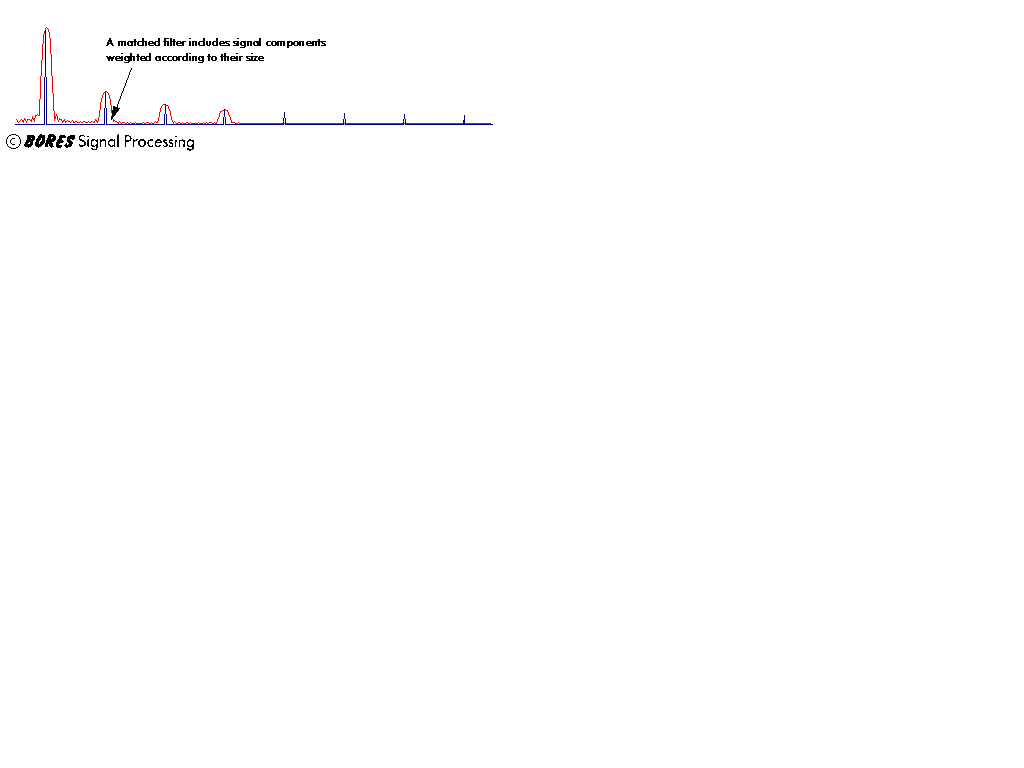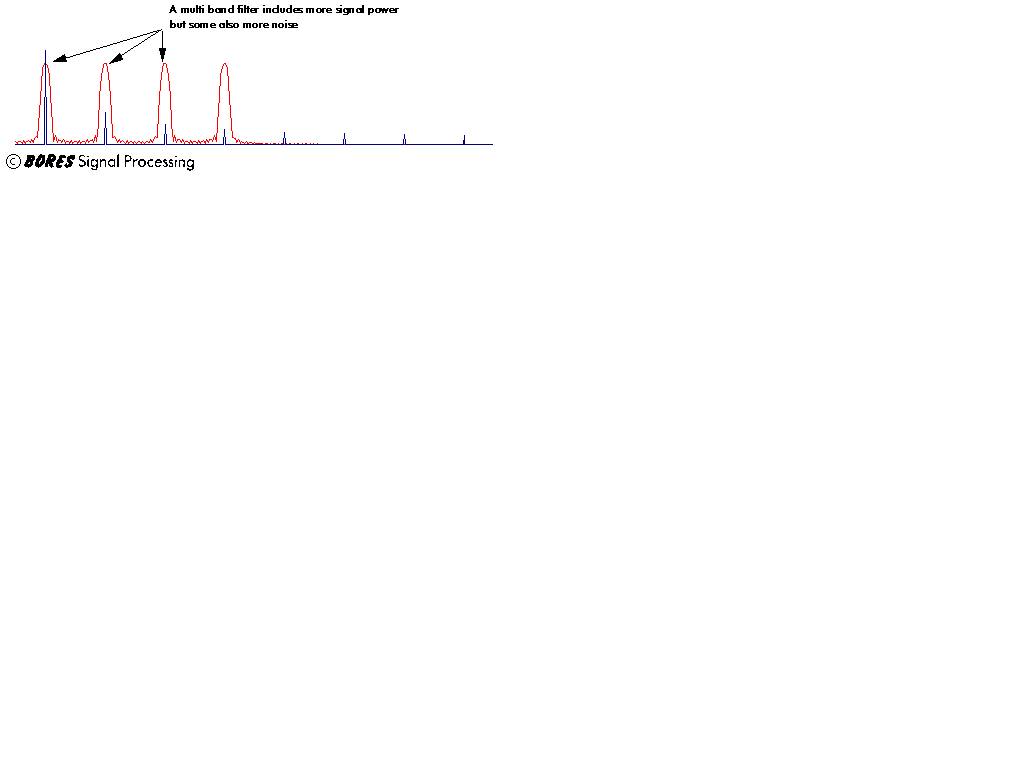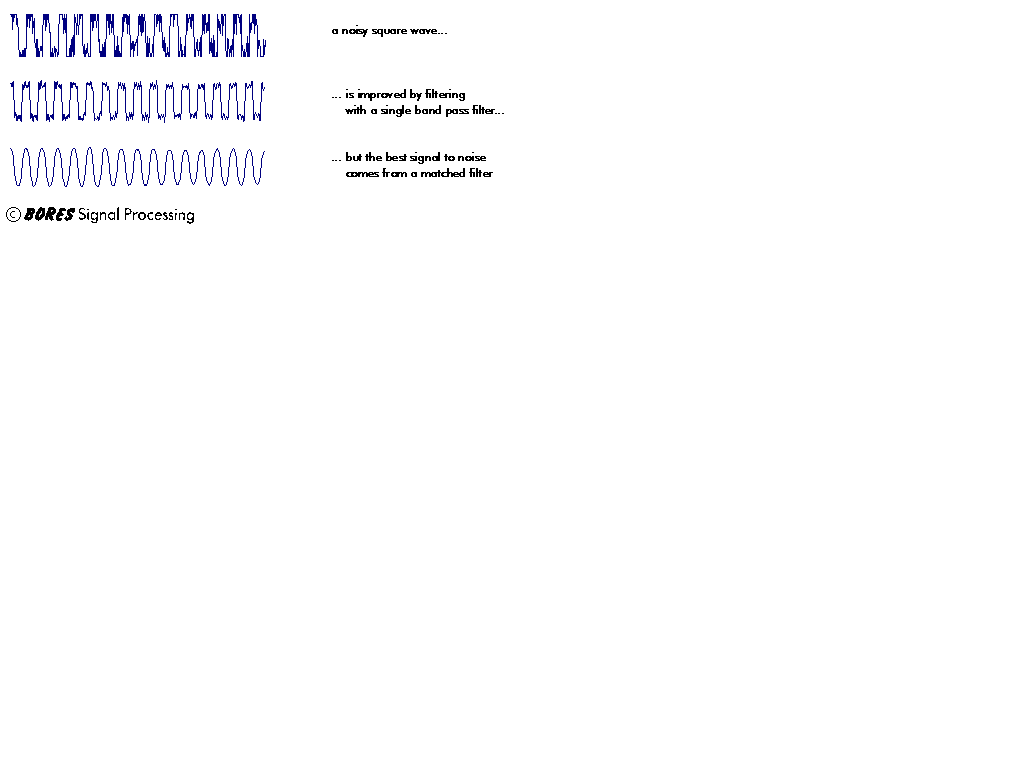


Unfortunately, there is still significant noise power in each of the filter bands. So this frequency components also allows more noise to pass through. To make matters worse, some signal frequency components are rather small - so they contribute relatively little extra signal power, while still allowing through all the noise from that filter band.
To get the maximum signal to noise ratio, we want to allow through all
the signal frequency
components - but to take more notice of signal frequency
components that are large and so contribute more to improving the overall
signal to noise ratio. We can do this by weighting the contributions from
each
filter
band proportionally to the signal power:

The diagram shows a
filter
whose
frequency
response is designed to exactly match the frequency
spectrum of the signal. Such a filter
gives the best possible improvement in signal to noise ratio, and is called
a
matched filter.

The diagram shows a noisy square wave. Passing this through a single band passfilter improves the signal to noise ratio: but passing it through a matched filter gives the maximum possible improvement in signal to noise ratio.
A matched filter is in fact the same as correlating a signal with a copy of itself.
Go back to previous page
Go back to start of section
Go to Introductory course
Go back to BORES Home Page
![]()
Last updated: 29th January 1998
File http://www.bores.com/courses/advanced/matched/11_mat.htm